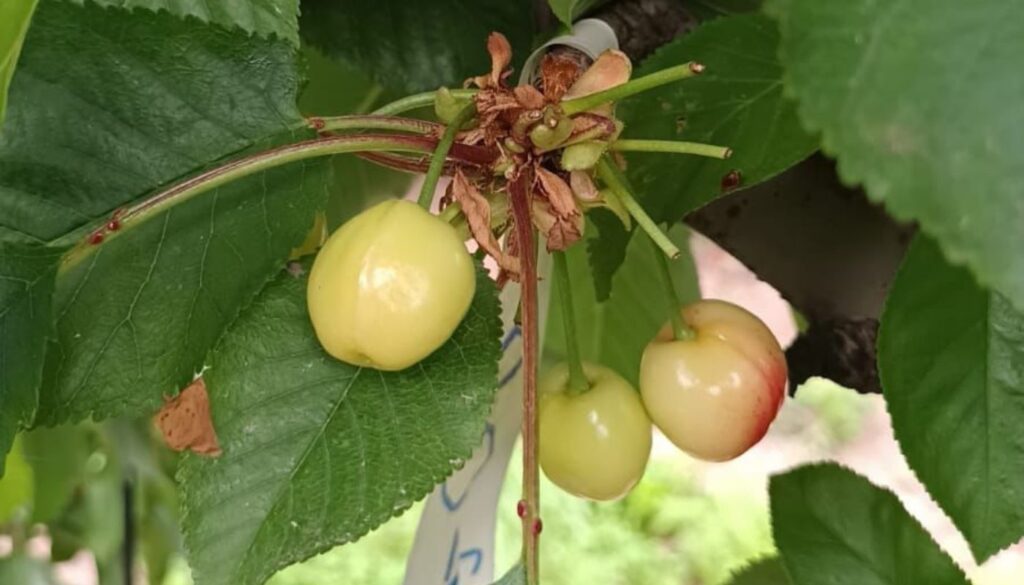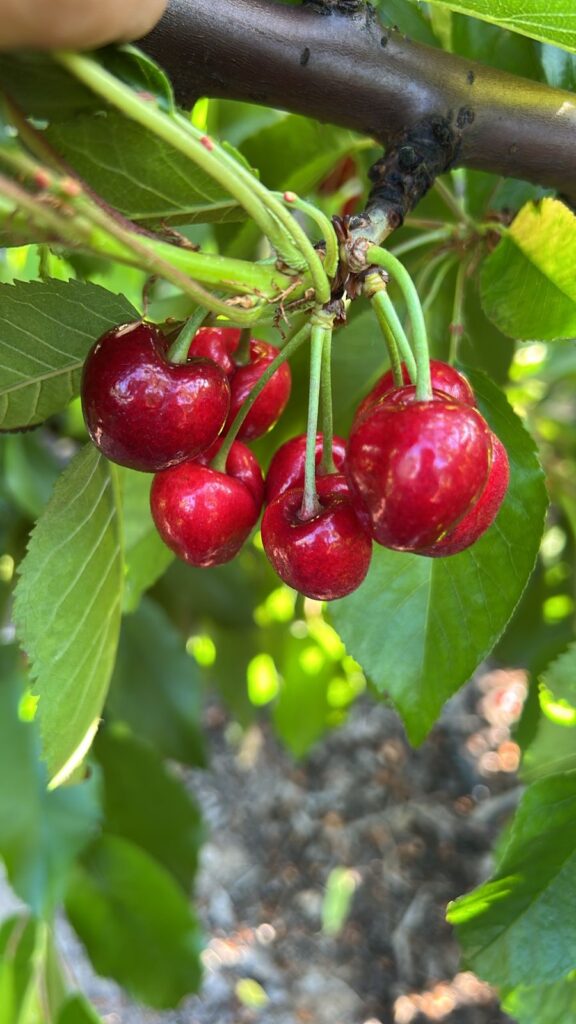What would be the kid's dream in terms of productivity?, and we are not thinking about winning the World Cup. For any producer of export fruit, especially for a producer of cherries, the dream of the kid would be to obtain fruit with high to very high calibers; high in dry matter, firm and without cracks, bruises, or pitting; and with good brix degrees; with the correct color for the market and the variety; lively, turgid and green pedicels; and all this that is maintained as long as possible until consumption. This long list of attributes has the objective of satisfying the requirements of the destination markets and obtaining the maximum profitability of the crop.
And how to achieve this?The secret lies in the so-called hidden side of the plant, the roots; and the moment is now, in post-harvest. This is well known by the plant stimulant company Innovak Global, which has dedicated much of its work to spreading the benefits of biostimulation from the Root, as its slogan indicates.
In deciduous fruit trees, which are predominantly grown in temperate climates with a winter recess period, sugars and amino acids from the reserve play an important role in the growth and development of the first structures that support flowering and in the flowering itself of the preceding season. There is a complex process from floral induction to fruit maturity that takes two growing seasons. Until very recently, sugars were seen only as sources of energy during the formation of reproductive structures; from floral induction during the summer of the first year, to flowering during the following spring. These sugars that are used in the development of reproductive structures are supplied by those stored in specialized tissues of permanent structures, such as roots, trunk and branches, or by photosynthesis in leaves or inflorescences, depending on the stage of development.
In flower formation, especially in meiosis, the supply of reserves is very important because it determines the expression of tissue differentiation that occurs during winter recess, and which corresponds in the entire plant to the transition between the re-mobilization of reserves from storage organs until the structures that support production manage to pass their photosynthetic compensation point. In other words, until the income exceeds the investment and operational costs of the plant.
Deficiencies in the accumulation of reserves during the previous year cause failures in the development of flowers and inflorescences, while the alteration of photosynthetic sources affects the formation of flowers and fruit development during the same year. In particular, the lack of availability of sugars in flowers in female meiosis caused by environmental or physiological factors can lead to drastic floral abortion. In addition to energy, sugars also play roles as regulators of gene expression and as signaling molecules that may be involved in stress responses. The same occurs with nitrogen, which is associated with amino acids that are also mobilized from reserves to sink points to form the first growths of the season.
If we analyze the theoretical behavior of the growth of root tips during the season of deciduous fruit trees, we can observe that there are two moments in which there is an increase in the rate of root growth and therefore a greater capacity to absorb nutrients from the soil solution. The first occurs at the beginning of the season driven by the auxinic activity of the shoots, and the second during the months where the post-harvest stage will be developing.
In order to correct nutritional levels (reserves), ensure better quality of buds, and therefore better productive potential in yield and quality, it is necessary to have the "security" of having an active root system after the harvest, that is, that new roots are being generated, which in theory should be normal, but this may not occur due to the effect of exogenous and/or endogenous factors.
Therefore, post-harvest is the opportunity to incorporate nutrients into the plant, associated with the flow of new root growth, and the fact that only these have the capacity to absorb nutrients, the rest only water.

For post-harvest work we must take into account the following points:
- Not all years are the same and plants do not respond linearly to production factors. Changes in the hormonal balance occur as a result of changes in environmental conditions and in the use of plant resources, such that accumulation and consumption vary according to the phenological needs of each structure in the plant (activity of sources and sinks). After the harvest and at the end of the season, the need for supply of shoots and obviously of fruits no longer exists, so the resources produced from here on are used for immediate use (basal and functional metabolism) and what is left is used for the synthesis of reserve compounds. In this way, it is necessary to maintain the supply of photosynthates as a factor of necessary investment of resources at the beginning of the season.
- Furthermore, the levels of organic N accumulated as a reserve during the season determine the response of growth (reproductive and vegetative) in the following spring. In this way, sufficient levels of organic N accumulated as a reserve respond better to recess breakers (hydrogenated cyanamide, or others) and even without them, buds with high levels of reserve require less cold for good sprouting.
- It is important to maintain active roots and even better new lateralizations in the post-harvest stage, since the youngest portions of the root are those with a high respiratory activity and therefore the capacity to absorb nutrients. This respiratory activity in the roots requires favorable environmental conditions such as adequate soil humidity and oxygenation. That is why we must not forget that in winter we must maintain humidity in the soil, if necessary by applying irrigation (be careful with winters that can have a dry and warm start with abundant rains towards the end of the season). This reaffirms the need to ensure the occurrence of good post-harvest root activity by using the root activator, NutriSorb.
- We will not always have these post-harvest root growth flows, since they are determined by different factors influenced by the nutritional status and the resulting hormonal balance, which explains the heterogeneity of responses and activities of the roots from year to year; and the occurrence in some fruit orchards of their premature decay. To achieve this, it is necessary to force the generation of roots through the use of rooting agents, such as Radigrow, which also promotes an amplified rooting effect on structures where the product has not had contact.
Recommendation for post-harvest root preparation
Apply via soil: 3 to 4 L/ha of NutriSorb + 10 to 15 L/ha of Promesol (maintenance dose), 10 to 20 days after harvest (depending on the fruit tree). Repeat NutriSorb 10 to 20 days later.
Please do not hesitate to consult the Innovak Global technical team so that the experience of using our products is tailored to your specific needs.










